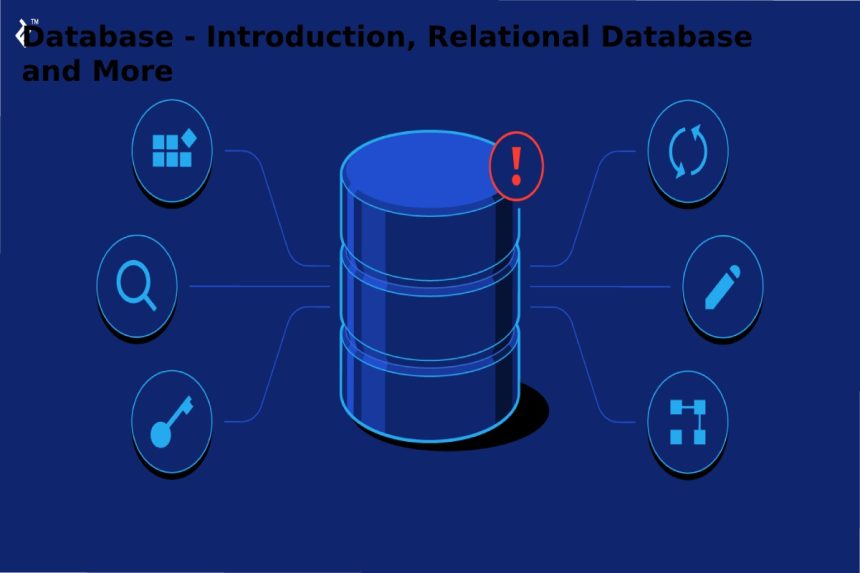Introduction
The database is simply a structure for permanently storing data on people, events, and objects (i.e., on a stable storage medium, not on a cache) to ensure that they are linked according to rules determined by the designer and allows access to them by multiple people.
This data remains stored on small units (called entities) linked by relationships. For example, entity permission; a block of data indicating a specific purpose (e.g., student, subject, employee, department).
And relationship (Relation) is a link between entities that expresses a logical connection between them (e.g., a student mark in a subject, an employee working in a department). Therefore, these entities and relationships as a whole provide all the information required from the database.
What is a Relational Database?
It is a type of database, described as a pool of relationships, each formed in a relational table with a unique single name. The table consists of a set of lines (or records), and columns (or Attributes descriptions), each with a fixed column set, each with a specific pattern allows to use.
While each record represents a relationship that binds a set of values, the table contains a number of these records provided that the entire document does not recur. The label “relational” came from the similarity between this table concept and the concept of sports relationships.
Each relationship must have a letterhead and structure. The header is simply the set of columns in the relationship, the system is the data set in the relationship, and the organization in the records.
Another key feature of relational databases is the use of keys. A column or set of custom columns in a relationship, whose knowledge leads to access to a single record specifically and uses to arrange or link data from other relationships.
One of the most important keys is the primary key, which the designer chooses to identify each record of data uniquely. Another key is the external key or imported “foreign key,” resulting from storing the initial critical values of a table in another table to express a relationship between them.
Now, for databases to hit their real purpose. There must be a way to access, control and manage them.
What is Database Management System?
It is a set of software tools that support creating and updating a database, the use, maintenance, and retrieval of data.
We consider different systems by data storage methods, recovery, and protection.
RDBMS allows for creating and handling a relational database, most of which use SQL query language to manage the database.
SQL: Structural query language for Structured Query Language, a software language used to handle data stored in RMB, is similar in grammatical composition to English, making reading, writing, and interpretation easy.
Some standard relational database management systems:
SQLite
A standard and open-source SQL database enable all data to remain stored in a single file. One of its most important features is that all data can remain stored locally without linking the database with a server. As a result, it’s a common choice of databases for mobile apps, PDA devices, MP3 players, and other electronic tools.
MySQL
It’s the most common open-source database used in web applications. Its main advantage is that it is easy to use, cheap and reliable. And many developers can help and answer questions. However, it suffers from poor performance and lacks advanced features developers prefer to use.
PostgreSQL
It is also an open-source but free database that no company owns, commonly used in web applications.
Many features are shares with MySQL. And offer excellent characteristics such as external critical support without complex structures. But they are slow in performance and are less common than MySQL, making it difficult for hosts and service providers to do the task.
Oracle DB
This database belongs to Oracle, and it pays for and is used in large applications, especially in banks. Most of the world’s central banks operate Oracle applications. Offering a potent mix of technology and comprehensive business applications. It includes core functions specifically designed for banks. Its main drawback is that it is not free.
SQL Server
This database belongs to Microsoft, and like Oracle, it is also driven. Often used in large enterprise applications, their primary difference is from Oracle support windows.
Microsoft offers a free beginner-level version called Express, but it can become costly when expanding the app.
Therefore, the data in the relational database remains stored within relational tables (representing relationships between entities). Which can grow to contain several descriptors and records. The Relational Database Management System (RDBMSs) uses SQL structural query language to manage these vast tables. You can choose RDBMS to comfort you and suit the complexity of the application you’re working on.


